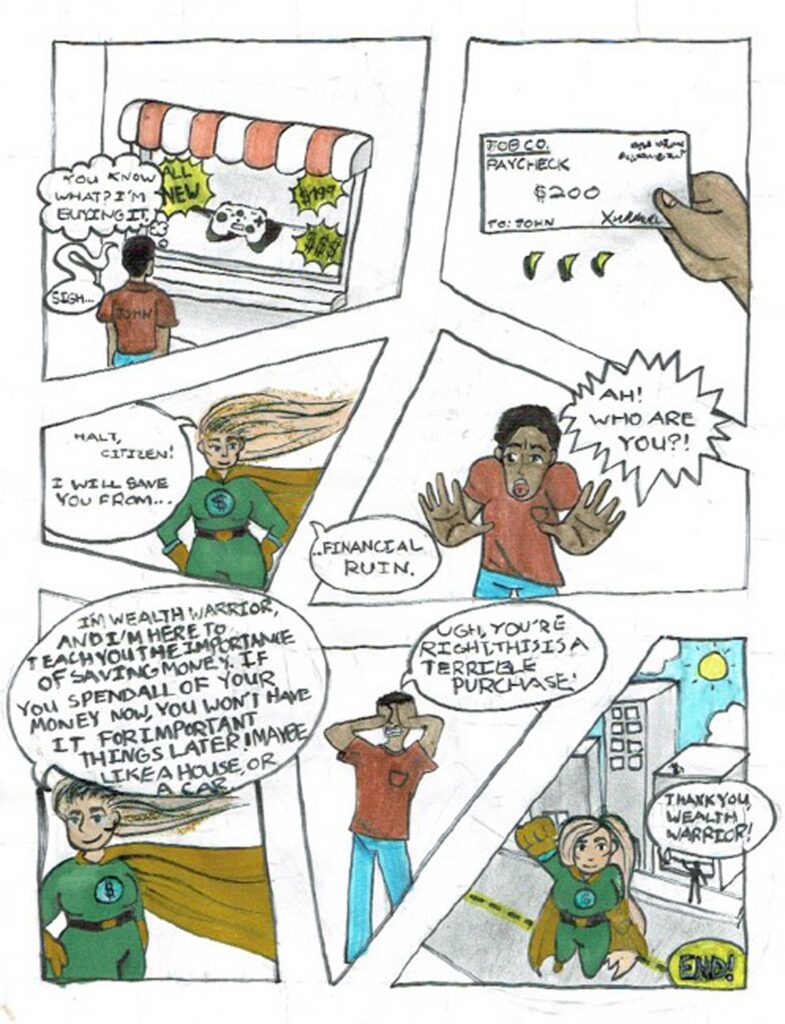Tell us about yourself
I am a native San Diegan. I grew up on 36th Logan, east of Barrio Logan, and attended Emerson Elementary School.
I started writing poetry at the age of eight. I loved reading and starved for books about sports, fiction and non-fiction, and biographies.
I think I wanted to be a writer from a long time back.
We’re assuming you enjoy reading and have a few favorite books. Which ones have shaped who you are and your world view?
“The Grapes of Wrath” by John Steinbeck had a tremendous influence on me. Other influences were activist Dick Gregory, Herman Hesse, and Charles Dickens. I have read various translations of Odysseus. I love mythology. And I favor the classics over modern literature.
How did you get involved with the San Diego Council on Literacy?
I began working with Project READ at the National City Public Library in 1985…many years ago. This was an adult literacy program that was taking a lead role in promoting America’s best kept secret about adult illiteracy. One year later, the San Diego Council on Literacy was formed. And two years after that, I became it’s first employee.
I have two careers with the SDCOL, one that lasted 14 years and the current one that is in its 16th year. This was the work I was meant to do.
Tell us about the San Diego Council on Literacy.
The San Diego Council on Literacy represents a network of 34 youth, adult, and family literacy programs that annually served 100,000 residents of all ages…at no cost to them. We are an advocacy organization that is responsible for creating a brand and identity for the literacy effort in our region, and with the job of generating access to literacy resources that are available in the region for those who need and request literacy assistance. We calculate the state of literacy in the region, increase literacy awareness, highlight the importance of literacy to the community, fill service gaps, and generate resources that support literacy programs and those that they serve.
The second annual Financial Literacy Superheroes Competition awards will be presented in April. Financial literacy is not something we generally associate with teaching people how to read. What is financial literacy and what was the catalyst behind starting the competition?
Literacy is about functionality. It is about reading, writing, and math…and use of technology.
Sometimes, even literacy people forget that math is part of the work they do. We use reading and math together to process information…to meet daily needs. The people at Mission Federal Credit Union understand this. They approached the San Diego Council on Literacy about producing something that has not already been done, something creative, fun, and hands-on to promote greater financial literacy among local young people. The competition is doing what we want it to do.

2022 Financial Literacy contest.
What other notable competitions or fundraisers does SDCOL have coming this year?
We have something we call “Book Humans of San Diego.”
It is a photo contest. We seek best photos that show San Diego residents in the act of reading near a San Diego landmark.
We would also like to bring back Eat. Drink. Read. and The Bee. One is a foodie competition and the other is an adult spelling contest. We just need sponsors.
How do you define literacy/illiteracy?
Literacy is the ability to read, write, do calculations, and use technology to meet personal or professional needs. There is no one reading level that separates people who can read from those who can’t or who don’t read well. Again, the emphasis is on functionality. Sometimes, people just aim to read well enough to experience the joy of reading a book to their child.
Decades ago, in the era of greater emphasis on agriculture, you were considered literate if you could sign your name. Our definition of literacy changes, defined by the needs of society. All that aside, we aspire to see all residents reading and writing at the 8th grade level and above.
A few years ago, the illiteracy rate in San Diego County was around 20% of the adult population. Where are the numbers today? Can you give us a sense of the demographic breakdown of literacy rates?
We rely on the results from past national literacy assessments, and the U.S. Census, to calculate adult literacy rates.
The last study showed these percentages for adults in the U.S. who read prose at the lowest level of literacy, based on ethnicity:
7% of the White adult population
24% of the Black adult population
44% of the Latino adult population
14% of the Asian/Pacific Islander population
Since these studies are based on samplings from across the U.S., it is difficult to show a change in local numbers. But we can make a few statements about literacy rates in the region… that our three least (adult) literate cities are in the South Bay. We know that our least literate communities are in San Ysidro and Southeast communities. And we see the strong correlation between literacy rates in income levels.
Our belief is that the real gap that separates us is a resource gap. When you give people the same resources, they experience the same successes. People are not low-income because they don’t read well; they don’t read well because they are caught in a cycle of poverty that doesn’t provide them with the resources they need, with the voice they need, and with interventions they need. I shouldn’t have to say this, but, the children who attend school in San Ysidro are just as capable as children attending school in Encinitas.
What’s lacking are resources and ingredients that produce strong readers. What sort of challenges do today’s most popular forms of communication (videos, podcasts, television) present to organizations like SDCOL that are trying to promote reading and literacy in general?
We know that technology brings us loads of advantages and endless entertainment.
Unfortunately, it has contributed to a society where most children are spending an average of eight hours a day on the Internet, no playing outdoors, no reading books, and no practicing the priceless craft of writing. We use technology to teach reading. That’s one great application of technology. But we are competing with a whole new world in which technology is the ruler and entertainment is the grand distraction. What we do with technology is what matters most.
Why should someone care if their neighbor, coworker, or casual acquaintance is illiterate or functionally literate?
Literacy, or the lack of it, affects all of us. Literacy is everywhere…and nowhere. It is so close to us, we miss it. It is a root problem, underground, hidden, and shows itself in other ways, in disguise. Unfortunately, as a society, we have conditioned ourselves to address symptoms vs. causes. We don’t see that people who don’t read well have limited choices.
Adults, in their roles as parents, heads of households, workers, and community members, will function better with strong literacy skills. When they don’t, we all pay. Businesses have a hard time finding the workers they need. Cost of healthcare increases. And there are other expenses that come to all of us when people at low-income levels are hindered by their limited literacy skills. Our best estimates show that investments in literacy pay at a rate of 9 to 1.
Lastly, I must add that, the solutions are beyond our schools. We are winning and losing the literacy battle in the home. No doubt, we must demand more from our schools.
But we also need to bring our attention to those factors that affect the future success of a child way before that child is born, from prenatal care up to the child’s first day in school.
THE RELATIONSHIP BETWEENINCOME AND LITERACY SKILLS
“The average annual income of adults who are at the minimum proficiency level for literacy (Level 3) is nearly $63,000, significantly higher than the average of roughly $48,000 earned by adults who are just below proficiency (Level 2) and much higher than those at the lowest levels of literacy (Levels 0 and 1), who earn just over $34,000 on average.
“Because individuals with varying levels of literacy different in several other ways, such as age, gender, urbanicity, race, ethnicity, and parental education, the authors controlled for those differences and found that while the large income differences between people with different literacy skills shrank, they were still quite large:
• The difference for people below literacy Level 1 and those at Level 3 was $23,979
• The gap between people at Level 2 and those at Level 3 was $13,193.”














